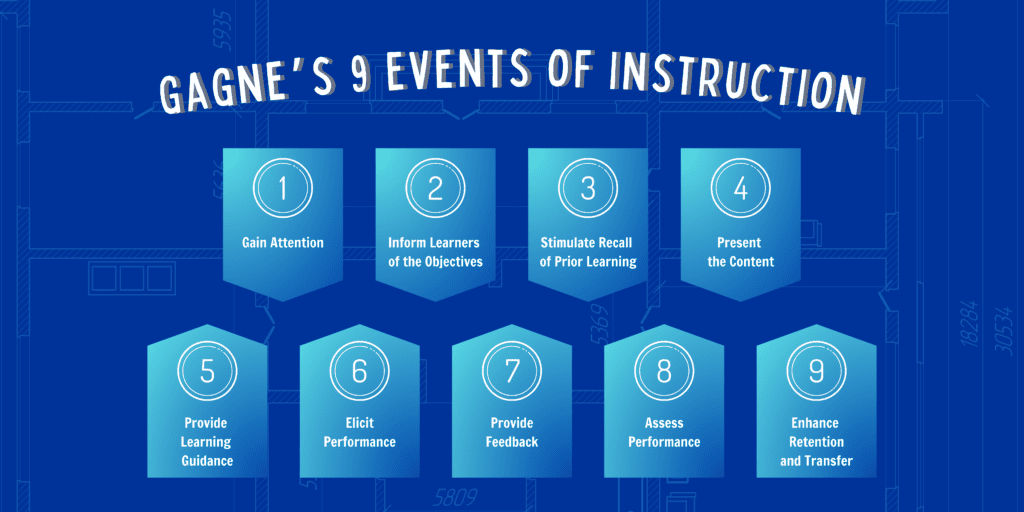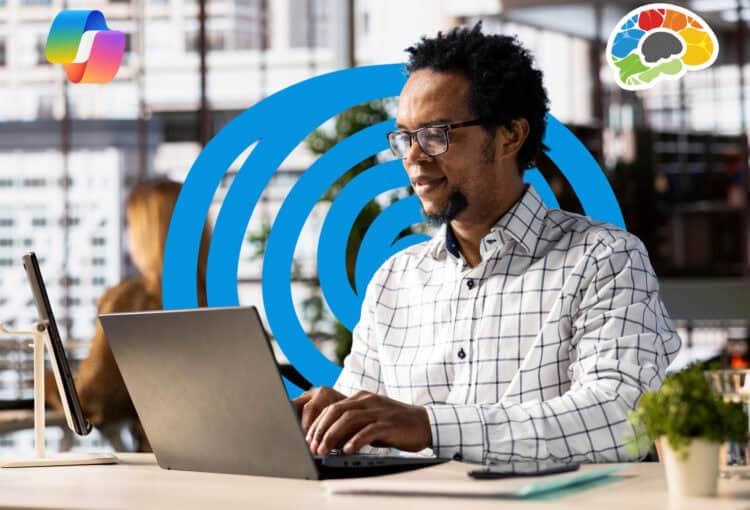Need a good approach for developing impactful training experiences?

One framework that has stood the test of time is Gagne’s 9 Events of Instruction. Developed in 1965 by psychologist, professor, and researcher Robert Gagne, this method provides a design structure you can utilize to create engaging and effective training experiences. The 9 events are adaptable to multiple types of learning experiences. They are also flexible and useful for teaching skills as well as information.
Continue reading for a summary of each event and a description of what it might look like when used in training.
1. Gain Attention:
The first event presents a “hook” to gain the learners’ attention. This stimulus should be interesting, compelling, or thought-provoking. The tools you use to cast your hook will vary, but the goal won’t change. Your purpose during this event is to spark interest in your topic.
Examples:
- Provide an icebreaker activity
- Play a video clip or post a poll question
- Tell a story
- Ask a rhetorical question
2. Inform Learners of the Objectives:
The second event communicates the learning objectives. Learners want to know what the training will provide. Declaring the training outcomes sets expectations and motivates participants. Your purpose during this event is to increase learner buy-in by stating what the course content will enable them to achieve.
Examples:
- Provide an agenda with the objectives listed at the beginning
- State the objectives during your introduction
Note: Good learning objectives are purposeful, clear, and measurable. For help crafting objectives, read this previous post on Bloom’s taxonomy.
3. Stimulate Recall of Prior Learning:
The third event activates prior knowledge, creating a foundation on which to connect new information. Encouraging participant reflection on what they already know helps forge connections between past and present. Your purpose during this event is to ensure a smooth transition into new concepts by building on existing understanding.
Examples:
- Ask learners to share what they know about the subject
- Describe a scenario and ask learners what might happen next
- Draw connections. “You may have heard about …“
4. Present the Content:
The fourth event presents the course content so that learning objectives are met. Enhance engagement during this step by using a variety of resources and methods, keeping in mind the diverse learning styles of your audience. Your purpose during this event is to effectively deliver the course content.
Examples:
- Be well-prepared and speak clearly
- Use visuals and interactive activities
- Try chunking materials, using microlearning, and employing different delivery styles
Note: Bigger Brains provides on-demand training via videos. We include resources such as downloadable files to practice along, handouts for reference, and transcripts.
5. Provide Learning Guidance:
The fifth event orients participants to the content. It works in tandem with event 6. Here, there is a balance between teacher support and learner independence. Your purpose during this event is to prepare learners to work through or apply the content on their own.
Example:
- Demonstrate completing a task
- List expectations
- Explain best practices for approaching the material
6. Elicit Performance:
The sixth event is a hands-on phase where students put their new knowledge into action. Your purpose during this event is to provide activities which allow participants to further their understanding and skill development by engaging with the content and applying knowledge.
Examples: Ask students to …
- Discuss a case study
- Apply knowledge in a simulation
- Solve problems
7. Provide Feedback:
The seventh event offers the learner timely and constructive feedback. Here the instructor acts as a coach. Your purpose during this event is to provide insights on performance, reinforcing positive aspects and giving guidance for improvement.
Examples:
- Respond to discussion of case study
- Lead a simulation debrief and connect to objectives
- Review solutions to problems
8. Assess Performance:
The eighth event evaluates the learner’s performance. During this event, the instructor serves as an assessor rather than a coach, but feedback is also an important part of the assessment process. Your purpose during this event is to measure proficiency against the objectives and identify if skills have been mastered/developed.
Examples:
- Provide knowledge checks of the content
- Employ formative and summative assessments that align with instructional goals
- Regularly evaluate learner performance, adjusting your approach as needed
9. Enhance Retention and Transfer:
The ninth event employs techniques that reinforce learning. Personalizing information increases retention. Connecting new information to real-world applications fosters the transfer of knowledge. Your purpose during this event is to help students retain and prepare them to apply the information in real-world settings.
Examples:
- Small group discussions on applying content to work scenarios
- Practical exercises for applying knowledge or skills
By understanding and implementing Gagne’s 9 Events of Instruction, you will be able to foster a culture of continuous learning and skill development!




